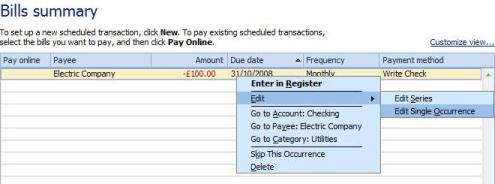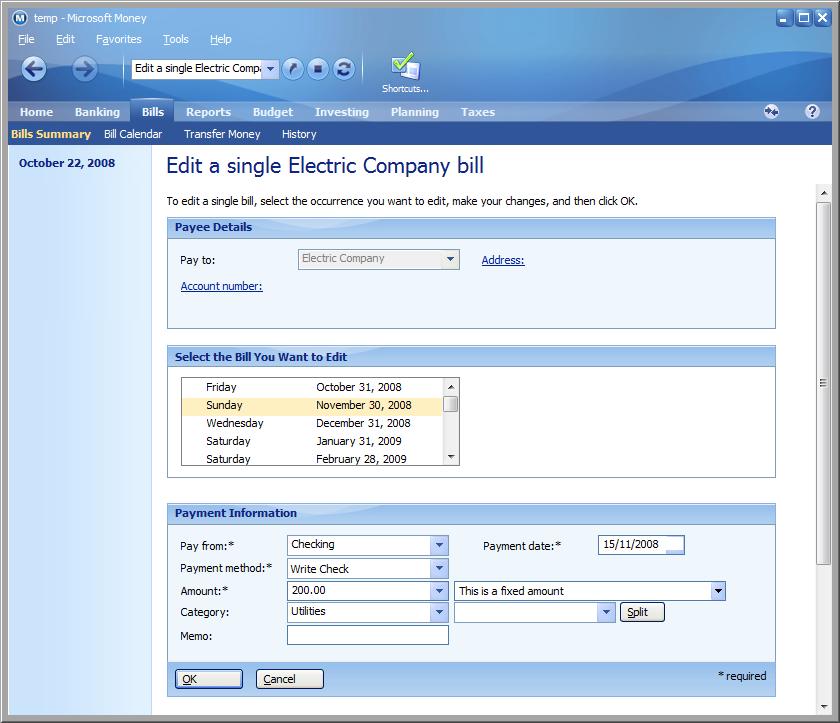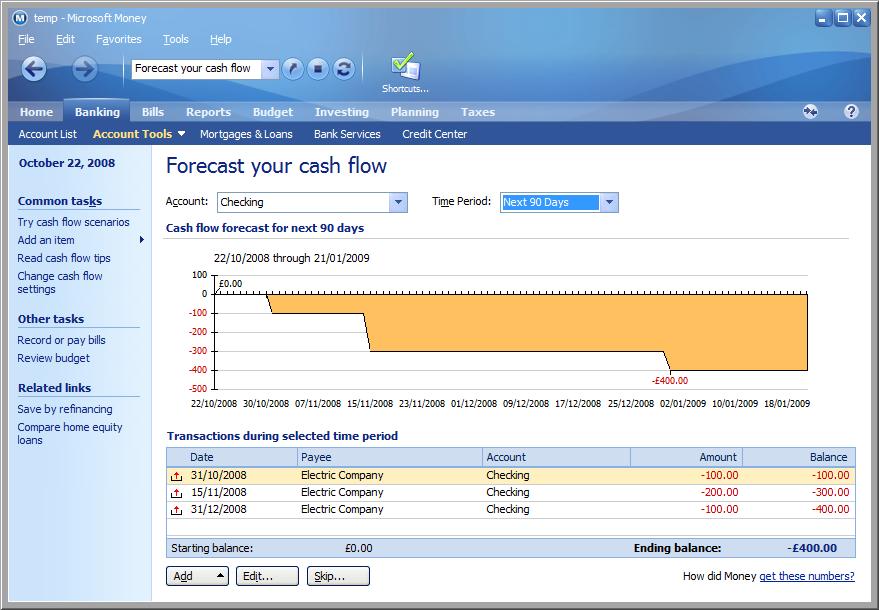Changing a single occurrence of a bill or deposit
If you have a bill or deposit which occurs on a regular basis, say once per month, then Money can
track that quite well using the bills and deposits tool. However, once in a while, one of these 'regular' payments
may need to be changed - for example if the date is adjusted (possibly for Christmas) or the amount is significantly
altered.
To enable the cash flow chart to show a more accurate graph, you might wish to adjust a single
occurrence of this bill or deposit to help you plan.
The first step is to enable 'advanced bills', rather
than 'essential bills'. For older versions of Money, this is not required, but for Money 2007 and Money Plus
(possibly also Money 2006), this is a required step. You can find the instructions on how to do this in
Article 598.
Once this setting has been changed (you can easily see whether it is set or not on the top right hand
corner of the bills summary page), the option to edit single occurrences is available. This is selectable by right
clicking on the bill/deposit in question, choosing 'Edit' and then 'Edit Single Occurrence'. This is illustrated
below.

In the example I am working with, I have a single bill of £100 which occurs monthly. I'll be
changing this to change the date it is paid for one occurrence, and also the amount.
The next
window which is shown provides details about the bill/deposit. It shows the dates when the bill is due to
be paid and each of these is editable. Note that it will only show the next 12 entries. Click on the image
below for a larger version.

In the middle section (select a bill you want to edit), you select a particular date
(which is highlighted a yellowish color) and then change the information in the lower part (payment information).
In my example I have changed the date to be 15 days earlier and the amount from £100 to £200.
Press OK and the change is saved.
After pressing OK, you'll return to the bills summary.
Note that the change will only be seen in the summary when the changed value is the next entry,
otherwise it'll be the default entry. However, if you look at the cash flow forecast, then the
custom occurrence is used in the chart.

Note that in the 'transactions during the selected time period' the new date and amounts are
reflected. The chart also shows a £200 drop for the Checking account.
You can customize up to 12
entries in the bill or deposit, and you are not limited to the number of bills/deposits you edit. If you need
to delete an individual occurrence, then you should put a zero value in the amount field, as deletion isn't
supported. The next occurrence can always be skipped though, if you need to remove that entry.
Keywords: Advanced, Bills, Deposits, Occurrence